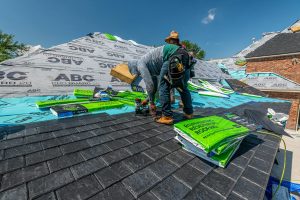Foundation repair takes time and proper planning to get the desired results. From the first inspection to the final walkthrough of a foundation repair project, each phase has its purpose. If you are not familiar with the process, it can feel overwhelming. Most foundation repair follows a clear timeline. Once you are aware of the steps, it is easier to be prepared and know what is coming next.
Some areas, like Greenville, SC, have homes that require deeper fixes due to shifting soil. That is why Greenville foundation repair experts usually recommend starting with a full inspection. This guide walks you through each stage of a foundation repair project so you are not caught off guard.
1. Initial Inspection and Damage Assessment
Every foundation repair project starts with a thorough inspection to identify any visible damage in the house, to look for things like cracks in walls, uneven floors, sticking doors, or gaps around windows. They will also look at the drainage pattern, soil conditions, and the structural layout of your home.
The inspection can take one to two hours, mainly depending on the size of the property and the extent of the problem. Some teams use laser levels or soil moisture meters to get a better reading on what is happening underneath the surface.
Once the damage is assessed, you will get a report or a breakdown of what needs to be fixed with the reasons. The report helps you get an overview of the issue before moving forward with any repair work for the foundation.
2. Repair Plan and Cost Estimate
Once the inspection is completed, the next step is putting together a repair plan that entails what needs to be done, how the work will be carried out, and how much it will cost you. You will likely receive a written estimate that breaks down the services involved in the project, along with additional costs such as permits or engineering reports.
The pricing might depend on the type of foundation and the extent of the damage. Some homes need beam installations to stabilize the structure, and others might need wall anchors, carbon fiber strips, or slab injections to correct the movement and cracks. In complex cases, engineers may have to be involved to review the plan before repair work begins.
The second stage is also when you will get the timeline for the job, depending on the availability and the urgency of the repair. Some crew can start within days, and others may be booked out for a certain time.
3. Scheduling and Site Preparation
After the plan has been approved, the project gets added to the schedule. Depending on the contractor’s schedule, the project may start immediately or take a few weeks. Urgent repairs get priority, but most homeowners can expect some wait time during busy seasons.
Before the crew arrives, some preparation work is needed. You may be asked to clear access points around the foundation, move the outdoor furniture, or trim back any plants or landscaping that block the foundation. Inside, it might be safer to store fragile decorations or furniture in a safer place if they are near the repair area.
In some cases, utilities might need to be marked or temporarily shut off. The repair team usually handles the coordination for these inconveniences. It is better to be aware beforehand and be prepared in case of any disruption.
4. Repair Work Begins
The fourth step is where the work starts. Once the crew is on the site, they start by setting up equipment and assessing the foundation. If piers are being installed, they will dig around the foundation to expose the footing. For slab repairs, they might drill holes to inject materials or install reinforcement systems.
The repair method depends on the issue; standard techniques include:
- Steel or helical piers to stabilize settling foundations
- Wall anchors or braces for bowing basement walls
- Slab jacking or foam injections to lift uneven concrete
Depending on the size of the job, this stage can take from a couple of days to over a few weeks. During this stage, there will be machinery sounds, vibrations, and a temporary mess around the site. Most crew members work in sections to decrease disturbances, and they will give you timely updates.
5. Work Checkup and Cleanup
After the repairs are done, the crew goes back through the work to make sure everything is solid. They will check the stability of the foundation and confirm that all repairs are holding up and that the system is operating as intended. They will also make any final changes and corrections if needed. If engineers were involved earlier, they may return to verify the results.
After the last checkup, the team begins the cleanup. This includes backfilling soil, removing equipment, and clearing out debris from your home. Any holes that were dug up are refilled and compacted. They may also patch up concrete, reseal basement walls, and smooth over areas where work was done.
The goal of this step is to make the site clean. While the landscaping or yard might need attention later, most contractors try to keep the mess to a minimum.
6. Final Walkthrough and Monitoring Plan
Before wrapping up the project, the contractors show you everything that was done. They will explain the repair, show you the area, and answer any questions you have. If you received a warranty or service agreement, this is when they will go over what is covered and what to look out for moving forward.
Foundation repair companies also offer a follow-up schedule or basic guidelines to help you check if the foundation is holding up well in the long run. This could involve checking for new cracks, watching for moisture buildup, or keeping gutters clean and drainage systems in good shape.
After the job is complete, there might be small shifts. That is normal, and most reputable teams will let you know what you can expect and when you should call them back.
How Long Does a Foundation Repair Project Usually Take?
Foundation repairs take a few days to a couple of weeks. The timing usually depends on how severe the damage is, what type of foundation your home has, and the method being used to fix it.
Small fixes like sealing cracks or lifting a section of concrete might only take one or two days. On the other hand, bigger projects that involve pier installations or wall reinforcements can take up to 10 days or more. If permits or engineering plans are needed, they can add a few extra days before work even begins.
Soil conditions, access to the foundation, or delays caused by weather can affect how long the repair takes. A good contractor will communicate the expected timeline before any of the work starts and keep you updated if anything changes during the repair.
Conclusion
Once you are aware of all the steps involved in the foundation repair process, it becomes much easier to manage. Being aware of what to expect helps you to plan ahead and avoid delays during the repair. Every home has different foundation repair needs, but the general timeline stays the same. The key to a smooth repair is to work with the team that communicates clearly and follows through at every stage.













